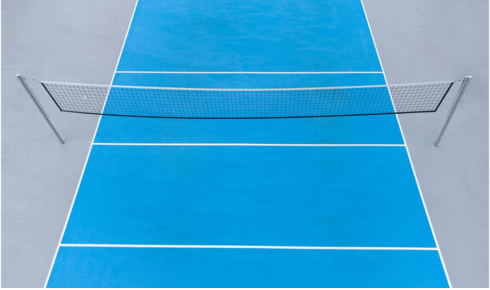Introduction
Installing a tennis court is a significant investment that requires careful planning and execution. Choosing the right tennis court flooring, materials, and construction methods can impact the longevity, safety, and performance of the court. Whether for professional use, recreational purposes, or sports clubs, ensuring the best installation process is crucial. This guide explores key factors to consider before starting tennis court installation to help make an informed decision.
1. Selecting the Right Surface Material
The choice of tennis court flooring plays a vital role in durability, performance, and maintenance. Synthetic acrylic tennis court flooring is widely preferred due to its excellent grip, all-weather resistance, and long-lasting quality. Unlike other materials, acrylic surfaces provide consistent ball bounce, reduced player fatigue, and low maintenance needs.
Factors to consider when choosing flooring materials:
- Durability: Acrylic flooring resists wear and tear, making it ideal for long-term use.
- Weather Resistance: Withstands extreme temperatures and UV exposure.
- Playability: Ensures uniform ball bounce and safe player movements.
- Low Maintenance: Easy to clean and repair when needed.
2. Location and Ground Preparation
Choosing the right location is critical for the court’s longevity. The site should be level, well-drained, and free from obstacles like tree roots or uneven terrain. Proper ground preparation ensures the foundation is solid, preventing cracks and surface damage over time.
Factors considerations for site preparation:
- Conduct soil testing to assess stability.
- Ensure proper drainage to prevent water accumulation.
- Level the ground to avoid uneven surfaces that affect gameplay.
- Use a strong base layer such as asphalt or concrete for enhanced stability.
3. Dimensions and Layout Planning
A standard tennis court follows specific tennis court measurements, which should be adhered to during installation. Ensuring proper dimensions guarantees a professional playing experience and compliance with international standards.
Standard Tennis Court Dimensions:
- Singles Court: 23.77m (length) x 8.23m (width)
- Doubles Court: 23.77m (length) x 10.97m (width)
- Run-off space: At least 3.05m on the sides and 6.4m at the back
- Net Height: 1.07m at posts, 0.914m at center
Proper court markings, including service lines and baselines, should be applied using high-quality, fade-resistant paint.
4. Choosing a Reliable Contractor
Hiring experienced tennis court contractors ensures high-quality installation and reduces the risk of long-term issues. Professional contractors understand the nuances of tennis court construction and use the best materials for longevity and performance.
How to choose the best contractor:
- Look for tennis court construction companies near me with a strong portfolio.
- Check client reviews and past project testimonials.
- Ensure they use high-quality outdoor tennis court flooring materials.
- Confirm they offer warranties and post-installation maintenance services.
5. Drainage and Water Management
Effective drainage prevents water from pooling on the court, which can lead to cracks and surface degradation. A well-planned drainage system extends the lifespan of synthetic acrylic tennis court flooring.
Best practices for drainage:
- Install a slope to direct water away from the court.
- Use porous materials or underground drainage pipes.
- Ensure the court is built on a raised foundation to prevent waterlogging.
6. Quality Acrylic Coating and Finishing
Applying high-quality acrylic coatings enhances the court’s playability, durability, and appearance. The top layer should be slip-resistant, UV-resistant, and able to withstand heavy foot traffic.
Why choose synthetic acrylic coatings?
- Provides a smooth yet grippy surface.
- Enhances color vibrancy and aesthetic appeal.
- Reduces wear and tear from frequent usage.
- Offers consistent playing conditions throughout the year.
7. Cost Considerations and Budgeting
Understanding the cost to install a tennis court helps in proper budgeting and decision-making. The price varies based on location, materials, and contractor expertise.
Cost Factors Include:
- Site preparation and excavation
- Base material (asphalt or concrete)
- Acrylic surfacing and coatings
- Labor and contractor fees
To get the best price, compare multiple tennis court installation companies near me and request detailed quotes.
8. Maintenance Requirements
Regular maintenance keeps the court in top condition and prevents costly repairs. Tennis court resurfacing companies offer restoration services to extend the lifespan of your flooring.
Essential maintenance tips:
- Regularly clean the surface to remove dirt and debris.
- Inspect for cracks and repair them promptly.
- Reapply acrylic coatings when necessary to maintain playability.
- Keep the drainage system clear to avoid water damage.
Conclusion
Installing a tennis court requires careful planning, the right materials, and professional expertise to ensure long-lasting performance. Synthetic acrylic tennis court flooring offers durability, weather resistance, and optimal playability, making it the best choice for outdoor courts. Working with experienced tennis court contractors guarantees a high-quality installation tailored to meet specific needs. By considering these key factors, players and facility owners can enjoy a professional-grade tennis court for years to come.


